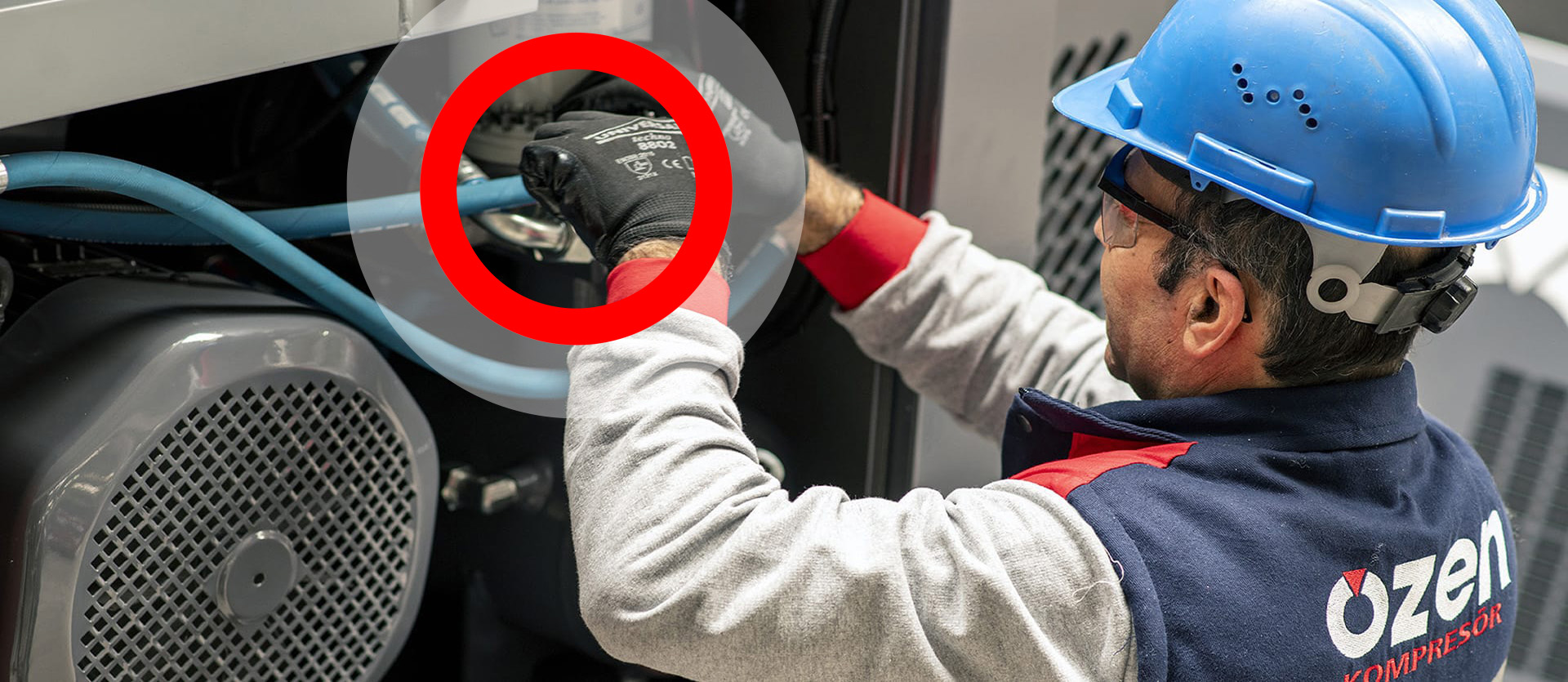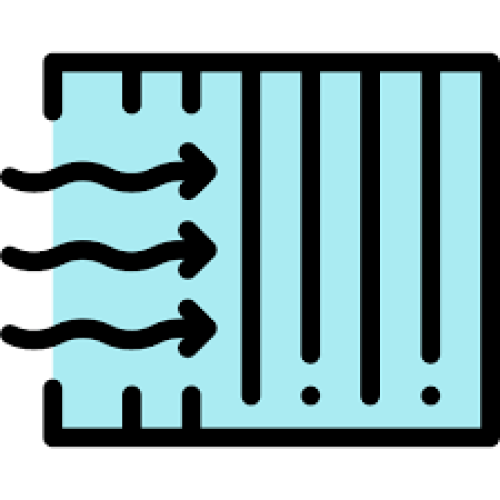What Should Be Done When There Is Not Enough Pressure in the Air Compressor?
4 October 2023, Wednesday

What should you do if your compressor pressure is insufficient? You can find the details in the rest of our article.
What is the Air Compressor Pressure?
Air compressor pressure is the compressed air pressure coming out of an air compressor. Thus, this pressure is usually expressed in units such as psi (pounds per square inch) or bar.
The air compressor pressure may vary depending on the design, type, and settings of the compressor. Compressors can usually operate at different pressure levels, but the commonly used pressure range is between 70 psi (5 bar) and 150 psi (10 bar).
The compressor pressure varies depending on the intended use and application. Some applications require low-pressure air, while some may require higher-pressure air. For example, while air tools typically operate at a pressure between 90 psi (6.2 bar) and 120 psi (8.3 bar), some industrial applications may require higher pressures.
The compressor pressure must be adjusted in accordance with the requirements of the equipment or system to be used. The required pressure level must be determined in line with the specifications or application requirements specified by the equipment manufacturer.
The pressure adjustment is usually carried out on the compressor's control panel or pressure regulating valve. These settings are used to control the working pressure of the compressor and are set to the desired pressure value.
The correct adjustment of the compressor pressure ensures the efficient and safe operation of the air system. However, the design limitations and application requirements for the compressor must be taken into account. The maximum limits of the compressor pressure should not be exceeded and safety precautions should not be ignored.
What Happens If the Air Compressor Cannot Produce Enough Pressure?
If an air compressor is unable to generate sufficient pressure, the following consequences may occur:
The performance of equipment or vehicles decreases: An air compressor is usually used to provide compressed air for air tools, pneumatic systems, or other applications. If the compressor cannot produce enough pressure, the performance of these equipment or vehicles may drop. For example, air tools may operate at low pressure and may not provide the expected power or efficiency.
Production efficiency decreases: Air compressors used in industrial environments are important for the efficient operation of production lines and processes. If the compressor cannot produce enough pressure, the processes on the production line will be affected and production efficiency may decrease. This can lead to time loss, low production speed and difficulties in achieving production goals.
The operation of pneumatic systems is affected: Pneumatic systems are automation and control systems in which compressed air is used. If the compressor cannot generate sufficient pressure, the pneumatic systems may be affected in terms of correct operation. For example, the movement of cylinders may slow down, valves may not work properly, or failures may occur in pneumatic circuits.
The risk of malfunction of airborne equipment increases: Some air source equipment may be damaged or malfunction if it operates at low pressure. For example, air brake systems or pneumatic valves may not work properly or may break down when there is not enough pressure. This can also lead to security risks.
The risk of compressor overload increases: In the event that the compressor is unable to generate sufficient pressure, users usually try to operate the compressor at a higher pressure setting. This may cause the compressor to exceed its design limits and overload. Overloading of the compressor can lead to problems such as overheating, increased energy consumption, and shortened compressor life.
Therefore, it is important that an air compressor generates sufficient pressure. In order for the compressor to work efficiently and correctly, regular maintenance should be performed, the air filter should be checked regularly.
What Should Be Done When There Is Not Enough Pressure in the Compressor?
When there is not enough pressure in the air compressor, you can follow the following steps:

Check The Compressor: Check that the electrical connection of the compressor is correct and connected to the energy source. It is important that the compressor is connected to the energy source for proper operation.

Check pressure setting: Check the pressure setting of the compressor and make sure that it is set correctly. In some compressors, the pressure adjustment is located on a control panel or on a pressure regulating valve. Check the required pressure level and make adjustments if necessary.

Clean the Air Filter: Check the compressor's air filter and clean or replace it if necessary. A dirty or clogged air filter can block the airflow and cause a pressure drop. A clean air filter helps the air compressor to work efficiently.

Check for Air Leaks: Check for possible leaks in the compressor's air system. Air leaks can cause loss of pressure and insufficient pressure build-up. To detect leaks, you can use methods such as soapy water or air leak detection devices, and repair leaks if necessary.

Do the Maintenance of the Compressor: Regular maintenance of the compressor ensures efficient and accurate production of pressure. Check the oil level of the compressor and make an oil change if necessary. Clean or replace the filters. Check the general condition of the compressor and make repairs or adjustments if necessary.

Get Expert Help: If there is not enough pressure forming despite following the above steps or if the problem persists, it is recommended to consult a specialist. A compressor service technician can identify potential problems with the compressor and make the necessary repairs or adjustments.
Insufficient pressure in the compressor may be associated with several different causes. Therefore, it is important to follow the steps to diagnose and solve the problem. Do not forget about the safety precautions and carefully follow the manufacturer's instructions when working with the compressor.
What is a Compressor Air Pressure Booster?
A compressor air pressure booster is a device or system used to increase the pressure to a higher level released from an air compressor. This booster increases the pressure level at the compressor outlet, making it possible to use it in applications that require higher pressure.
Compressor air pressure booster is usually used in cases where the output pressure of air compressors is insufficient or when it is necessary to achieve the higher pressure levels required for a specific application. For example, if the output pressure of a compressor is 100 psi, but an application requires a pressure of 150 psi, this requirement can be met by using an air pressure booster.
Compressor air pressure boosters are generally available in two main types:
Air Pressure Booster Pumps: Such boosters take the airflow at the compressor outlet and work to produce an airflow at higher pressure. Air pumps are usually used with reciprocating or screw-type compressors.
Pressure Booster Tanks: Such boosters direct the air pressure at the compressor outlet into a tank and supply air at higher pressure. Pressure booster tanks store the output pressure of a compressor, allowing sudden pressure increases to be met in a specific application.
Compressor air pressure boosters are useful when high pressure is required for certain applications or when the compressor cannot produce sufficient pressure. These boosters can be used in various applications such as air tools, pneumatic systems, industrial equipment or processes. Before use, the capacity of the compressor and the requirements of the booster system must be correctly determined.
